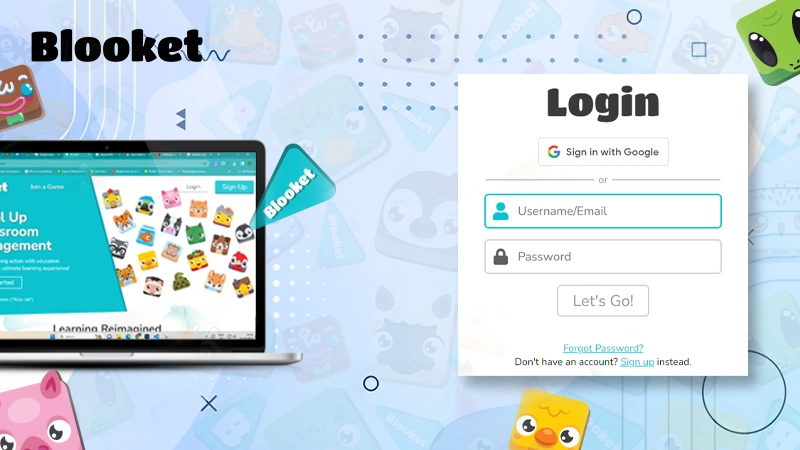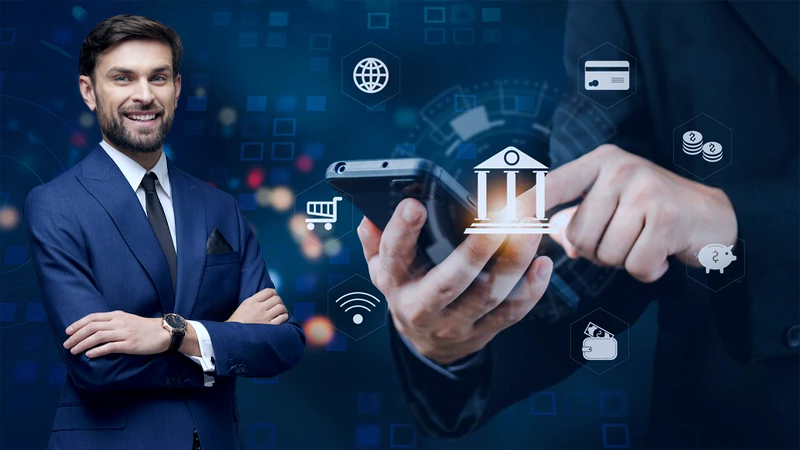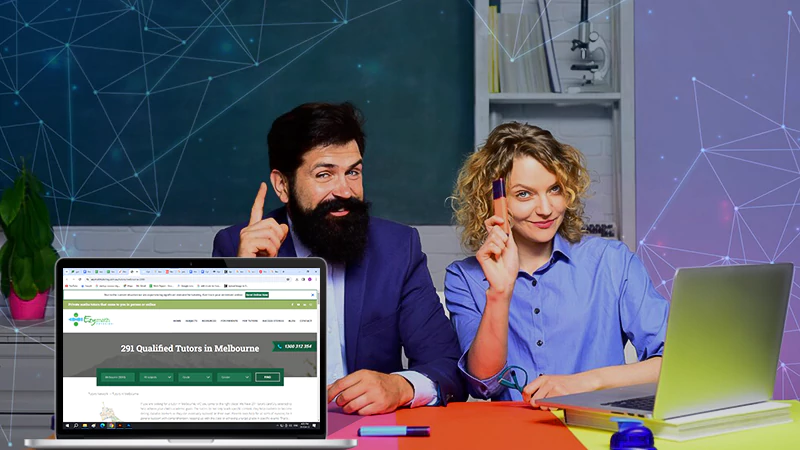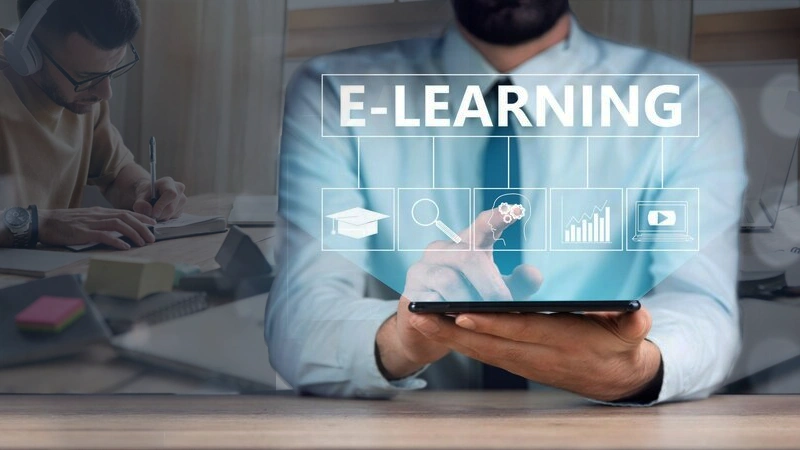Challenges and Opportunities in Implementing 5G Technology in Schools

In ever-evolving e-learning trends, 5G technology takes the spotlight as the pinnacle of wireless communication. Educational institutions are finding themselves at the crossroads of preparing the next generation for the technological challenges of the future. It appears as a fascinating mix of hurdles and opportunities.
It’s a bit like a coin with two sides, and we’re here to delve into both.
Together, let’s explore the ways in which the fifth generation is redefining education. Join us as we journey through the complex impact of the 5th gen network on how we learn and teach in our schools.
What is 5G Technology?
5G, or fifth-generation technology, is the latest iteration in cellular technology. Unlike its predecessors, it promises faster data download and upload speeds, more stable connections, and wider coverage.
This isn’t merely an incremental improvement. It’s a monumental leap. Imagine a world where virtual classrooms are as responsive as real ones or augmented reality becomes a common teaching tool. That’s the world that the fifth generation is nudging us towards.
Why Schools Need to Implement New Technologies?
The teaching landscape is no longer confined to chalkboards and textbooks. In this digital age, classroom technology isn’t just a perk; it’s a necessity.
Through the use of new technology, educational institutions prepare students for a future where digital literacy isn’t just an asset but a basic requirement. Moreover, these tools often lead to a more interactive and personalized learning experience, accommodating varied learning styles.
FUN FACT
5G technology can improve the quality of video streaming and confrencing, add haptic response capabilities, improve the immersive learning experience, and allow educators to use VR and AR in the classrooms.
Incorporating technology into the curriculum also encourages students to be proactive learners, often seeking knowledge beyond the confines of the syllabus. Digital tools and platforms enable them to access a vast ocean of information, encouraging a culture of continuous learning and reasoning.
Moreover, in a world where the volume of information is increasing exponentially, students need to develop skills to discern credible sources from the less reliable ones. For instance, identifying credible sources can make a difference when students are tasked with writing essays or research papers.
Some students even turn to platforms that offer an article review writing service to ensure the information they cite is accurate and relevant.
Last but not least, technology has been a key factor in closing the educational gap. Schools in underserved areas or those catering to students with special needs can use the power of technology to provide uniquely customized educational experiences. Online resources, adaptive learning software, and digital textbooks can be vital tools to make sure that every student has access to quality education regardless of their background or abilities.
Challenges in Implementing 5G Technology in Schools
As with any groundbreaking innovation, introducing 5G into the academic world has obstacles. Even as we appreciate its remarkable potential, it’s necessary to recognize and address the hurdles schools may face. Let’s explore them in-depth.
Infrastructure and Costs
It requires a radical shift in infrastructure. Not only does it demand the installation of 5G cell towers, but colleges and universities must also overhaul existing wireless equipment to be 5G-compatible.
This process might include updating routers, purchasing new devices, and hiring professionals for smooth integration. The costs can quickly add up, making it a significant investment. Justifying or even affording these expenses can be challenging for higher education institutions that already operate within tight budgets.
Security Concerns
The superior speed and connectivity of 5G also mean that data is transmitted and received at unprecedented rates. This increased flow can provide cyber attackers with more opportunities to exploit potential vulnerabilities. Educational institutions collect sensitive information, from student grades to personal data, making them attractive targets.
To counteract these risks, institutions must invest in advanced cybersecurity measures, which can pose budgetary concerns.
Health and Safety
Introducing new technology often leads to health concerns, and the fifth generation is no exception. Rumors and concerns about the potentially harmful effects of 5G radiation have made headlines, leading to apprehensions among parents and staff.
Although numerous studies, including those conducted by reputable bodies like the World Health Organization, have found no definitive harmful effects, the ongoing debate means schools must be proactive. They must be well-informed, transparent, and ready to implement safety measures.
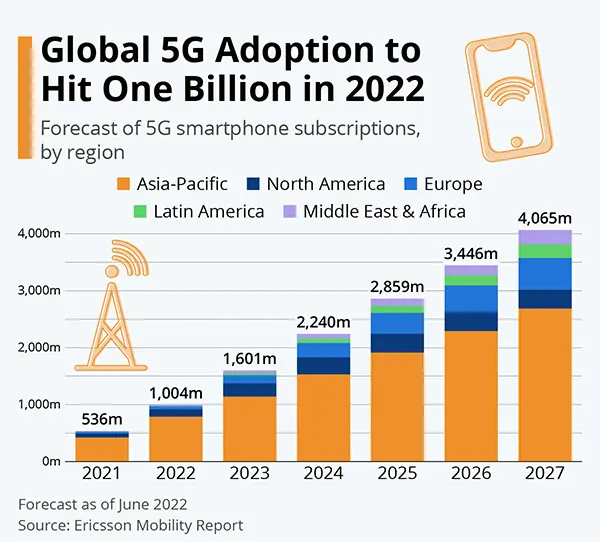
Technological Disparities
Its promise might inadvertently spotlight technological inequalities within the education sector. Some prestigious institutions might seamlessly incorporate 5G, but schools in underserved regions may struggle.
This disparity can lead to a two-tiered education system where access to advanced tech-driven resources becomes a luxury only some can afford. Balancing this technological divide will be a moral and logistical challenge for the broader educational community.
Opportunities in Implementing 5G Technology in Schools
Despite the difficulties that persist, introducing it in educational environments can dramatically transform the learning experience, pushing the boundaries of what’s possible. Let’s delve deeper into the myriad opportunities that it presents.
Enhanced Virtual Learning
It has the potential to redefine the landscape of online education. The increased bandwidth can support high-resolution video streaming without buffering, allowing for clearer and more interactive video lessons.
Also, the low latency ensures real-time feedback, making interactions in virtual classrooms feel as immediate as face-to-face conversations. This greatly benefits students in remote areas or those who cannot attend school in person, ensuring they receive an equally robust education.
Immersive Learning Experiences
It doesn’t just change how we connect; it changes how we experience it. The high data speeds and low latency make Augmented Reality (AR) and Virtual Reality (VR) smoother and more realistic.
This means that once theoretical subjects can now be explored in a tangible manner. Students could walk through a digitally recreated rainforest in biology or explore a virtual art gallery in an art class. Such experiences not only make learning more engaging but also help in better retention of information.
Real-time Collaborations
Collaborative projects are at the heart of modern education. It ensures that geographic distances become irrelevant in collaboration. Students worldwide can work together on projects in real time, sharing ideas and resources instantly. For educators, this means the opportunity to co-create lesson plans or share resources with peers globally, leading to a richer educational content pool.
Data-driven Personalization
Modern education understands that one size doesn’t fit all. With its ability to swiftly transmit vast amounts of data, schools can leverage sophisticated analytics tools that track student performance in real time.
Educators can craft personalized lesson plans by understanding each student’s strengths, weaknesses, preferences, and pace. This enhances the learning experience and ensures that no student is left behind.
Risks in Implementing 5G Technology in Schools
The introduction of 5G technology in schools holds immense potential, but it doesn’t come without its fair share of risks that educators and administrators should be wary of.
First and foremost is the challenge of infrastructure investment. The deployment of 5G necessitates a complete overhaul of the existing network infrastructure. For many educational institutions, particularly those already on tight budgets, the substantial financial outlay for upgrading to 5G could strain their resources.
Such an investment might divert funds from other major areas, like hiring experienced faculty or maintaining school facilities.
Another significant concern lies in the realm of cybersecurity. The increasing connectivity and the introduction of numerous IoT (Internet of Things) devices make schools more susceptible to cyber-attacks.
Protecting the vast amounts of data that schools collect, from personal student information to administrative records, becomes paramount. A security breach could lead to a violation of privacy, loss of trust, or even legal implications.
It is also important to consider how the technology will affect society. The health and well-being of students could be affected. The long-term effects of 5G radiation, despite the overwhelming evidence to the contrary, are still unknown for students who will be exposed to this technology for extended periods of time. Because of this uncertainty, parents and guardians may become anxious, so schools must remain transparent and take proactive measures to allay worries.
Also, the introduction of fifth-generation (5G) may unintentionally widen the digital divide. It is possible that when well-resourced schools smoothly transition to this new technology, schools in underprivileged areas might struggle.
This could further the gap in the quality of education offered, leading to unequal opportunities for students based on their socio-economic backgrounds.
The potential benefits of 5G in the educational sector are undeniable, the risks cannot be overlooked. A balanced, well-researched approach to its implementation can help mitigate these concerns, ensuring that the promise of the fifth generation is realized without compromising on student safety or educational equity.
Also Read: Advantages of Online English Learning
Conclusion
The integration of 5G technology in schools presents a complex mix of challenges, risks, and opportunities. On one hand, it has the potential to revolutionize the educational experience and create new possibilities.
On the other hand, there are logistical and societal concerns that need to be addressed. To successfully incorporate technology in the classroom, educational institutions need to maintain a balanced perspective. It is important to leverage the benefits of 5th Gen technology to mitigate potential risks.
By taking a well-thought-out approach, schools can pave the way for a brighter, more inclusive, and interconnected future for students.
Blooket Login: Ultimate Guide to Login and Gameplay
10 Fastest Growing Tech Jobs in 2024
Justice: How Technology Transforms Asbestos Lawsuits
5 Quick Steps to Start Your Digital Banking…
Online Interior Design Courses: A Sustainable Choice for…
Private Tutor vs Teacher: What’s the Difference?
Top 10 Common Essay Writing Mistakes and How…
E-Learning Trends to Watch in the Coming Years
Incorporating Research into Your Essays: A Guide to…
The College Student’s Guide to Coping with Stressors
4 Mistakes to Avoid When Starting a Private…

